Cholesterol Drugs: What to Expect With Heart Medication
How can high cholesterol be controlled?
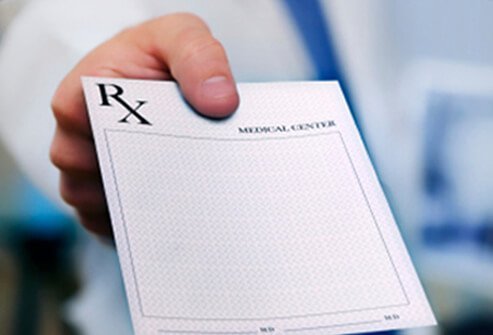
Nearly 1/3 of all adults in the U.S. have high cholesterol levels, according to the Centers for Disease Control (CDC). High cholesterol can put people at risk for heart disease, heart attacks, and death.
Cholesterol levels can be lowered with regular exercise, weight loss, and a healthy diet that is low in cholesterol and saturated fats. But in some cases, diet and exercise are not enough and cholesterol-lowering medications may be needed.
This slideshow will discuss the basics of cholesterol and the types of drugs prescribed to treat high cholesterol.
What is cholesterol?
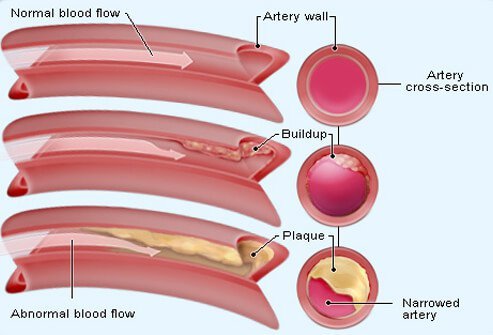
Cholesterol is a waxy, fat-like substance in the blood that is made by the body's liver and helps your body produce hormones, vitamin D, and to digest fat. The other source of cholesterol is from the diet in foods like egg yolks, fatty meats, and cheeses. You only need a small amount to regulate the body processes, and when there is excess cholesterol in the blood, it can build up on the walls of the blood vessels, in deposits called plaque. Plaque can contribute to the narrowing and blockages of arteries that can lead to heart disease.
What are LDL cholesterol, HDL cholesterol, and triglycerides?

There are different types of cholesterol. Most of your body's cholesterol is low density lipoprotein (LDL) cholesterol, also referred to as "bad" cholesterol because it can lead to plaque buildup in the arteries, which leads to heart disease and stroke.
High-density lipoprotein (HDL) cholesterol is called the "good" cholesterol because it absorbs "bad" cholesterol and carries it back to the liver, which helps remove it from your body. This can reduce your risk of heart disease and stroke.
Triglycerides are a type of fat found in your blood. High triglycerides combines with low HDL cholesterol or high LDL cholesterol can increase your risk for heart attack and stroke.
What types of cholesterol drugs are available?
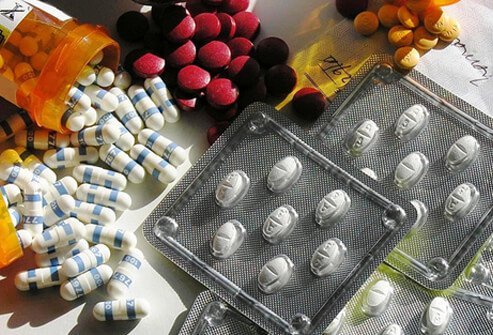
Numerous types of cholesterol drugs are available in the U.S., including statins (HMG CoA reductase inhibitors), nicotinic acid (niacin), fibric acid derivatives (fibrates), bile acid sequestrants, cholesterol absorption inhibitors and omega-3 fatty acids. These medications can help lower LDL ("bad") cholesterol levels, and increase HDL ("good") cholesterol levels. Different medications may also be combined to do both at the same time.
What are statins?
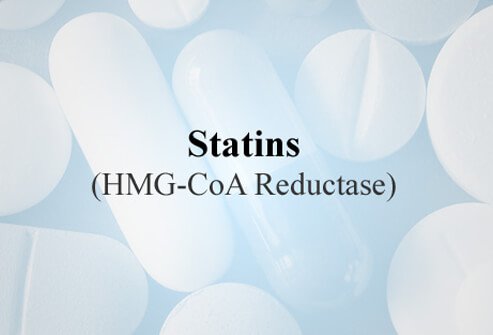
Statins are a class of drugs that work by lowering blood cholesterol levels, and reducing the production of cholesterol by the liver by blocking an enzyme. Statins are used to reduce high cholesterol levels, and also to prevent and treat hardening of the arteries (atherosclerosis) that can cause chest pain, heart attacks, strokes, peripheral vascular disease and intermittent claudication (cramping leg pain) in at-risk patients.
Risk factors for atherosclerosis include:
- high LDL ("bad") cholesterol levels or low HDL ("good") cholesterol levels
- high blood pressure
- a family history of early heart attacks
- smoking
- increasing age
- diabetes
- insulin resistance
- obesity
- lack of physical activity
- unhealthy diet
The next several slides are examples of statins currently prescribed to lower cholesterol.
atorvastatin (Lipitor)

Drug Class: Statins
Prescription: Yes
Generic: No
Preparations: Tablets of 10, 20, 40, and 80 mg.
Prescribed for: Atorvastatin (Lipitor) lowers the LDL ("bad") cholesterol and triglycerides and can raise your HDL ("good") cholesterol. This can lower the risk for heart attack, stroke, certain types of heart surgery, and chest pain in patients who have heart disease or risk factors for heart disease such as age, smoking, high blood pressure, low HDL, or family history of early heart disease.
Side effects: Atorvastatin (Lipitor) is generally well-tolerated. Minor side effects include diarrhea, constipation, nausea, upset stomach, gas, fatigue, heartburn, headache, muscle and joint pain, and changes in some blood tests. Atorvastatin (Lipitor) may cause liver and muscle damage (rhabdomyolysis).
rosuvastatin (Crestor)
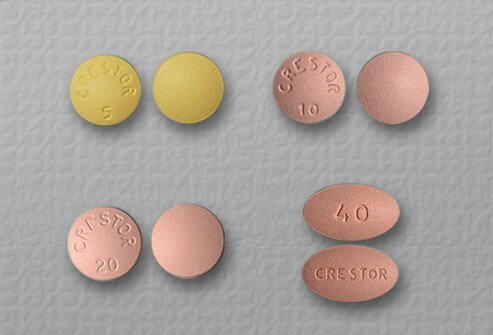
Drug Class: Statins
Prescription: Yes
Generic: No
Preparations: Tablets of 5, 10, 20, and 40 mg.
Prescribed for: Rosuvastatin (Crestor) is used for the reduction of blood total cholesterol, LDL cholesterol and triglyceride levels, and to increase HDL cholesterol levels, to reduce the chances of developing problems like heart disease and strokes.
Side effects: The most common side effects of rosuvastatin (Crestor) are headache, depression, nausea, vomiting, stomach pain, indigestion, diarrhea, constipation, muscle aches or pains, joint pain, and sleep problems (insomnia or nightmares). The most serious side effects are liver failure, muscle breakdown (rhabdomyolysis), and kidney failure.
simvastatin (Zocor)
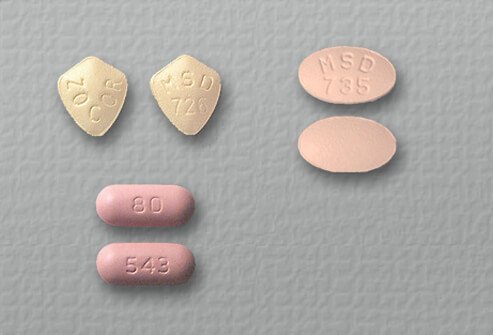
Drug Class: Statins
Prescription: Yes
Generic: Yes
Preparations: Tablets of 5, 10, 20, 40, and 80 mg.
Prescribed for: Simvastatin (Zocor) is used for reducing total cholesterol, LDL cholesterol, and triglycerides, and for increasing HDL cholesterol in patients with coronary heart disease, diabetes, peripheral vessel disease, or history of stroke or other cerebrovascular disease.
Side effects: The most common side effects of simvastatin (Zocor) are headache, nausea, vomiting, diarrhea, abdominal pain, muscle pain, heartburn, gas, bloating, indigestion, constipation, headache, joint pain, skin rash, sleep problems (insomnia), cold symptoms (stuffy nose, sneezing, or sore throat), and abnormal liver tests. Hypersensitivity reactions have also been reported. The most serious potential side effects are liver damage and muscle inflammation or breakdown.
pravastatin (Pravachol)

Drug Class: Statins
Prescription: Yes
Generic: Yes
Preparations: Tablets of 10, 20, 40, and 80 mg.
Prescribed for: Pravastatin (Pravachol) is used for the reduction of total and LDL cholesterol as well as triglycerides, and to increase HDL cholesterol. It has been suggested that pravastatin may reduce the occurrence of heart attacks, strokes, and death caused by coronary artery disease.
Side Effects: The most common side effects of pravastatin (Pravachol) are headache, nausea, vomiting, diarrhea, muscle pain, skin rash, dizziness, and abnormal liver tests. The most serious potential side effects are liver damage and muscle inflammation or breakdown.
lovastatin (Mevacor)
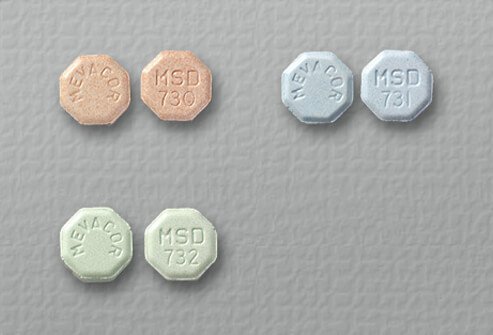
Drug Class: Statins
Prescription: Yes
Generic: Yes
Preparations: Tablets of 10, 20, and 40 mg.
Prescribed for: Lovastatin (Mevacor) is used to treat high LDL cholesterol. Effectiveness of the medication in lowering cholesterol is dose-related. Blood cholesterol determinations are performed in regular intervals during treatment so that dosage adjustments can be made. A reduction in LDL cholesterol level can be seen two weeks after starting therapy.
Side Effects: Side effects of lovastatin (Mevacor) are rare. Minor side effects include constipation, diarrhea, gas, heartburn, indigestion, stomach pain, nausea, headache, muscle pain, joint pain, back pain,and sleep problems (insomnia). Major side effects include abdominal pain or cramps, blurred vision, dizziness, itching, chest pain, muscle pain or cramps, rash, or yellowing of the skin or eyes.
fluvastatin (Lescol)

Drug Class: Statins
Prescription: Yes
Generic: Yes
Preparations: Tablets of 20 and 40 mg.
Prescribed for: Fluvastatin (Lescol) is used to treat high LDL cholesterol. Effectiveness of the medication in lowering cholesterol is dose-related. Blood cholesterol is checked at regular intervals during treatment so that dosage adjustments can be made.
Side effects: Side effects of fluvastatin (Lescol) are rare. Minor side effects include stomach upset, constipation, diarrhea, gas, heartburn, headache, and insomnia. Major side effects include abdominal pain or cramps, blurred vision, dizziness, itching, muscle pain or cramps, rash, or yellowing of the skin or eyes.
What are fibric acid derivatives (fibrates)?
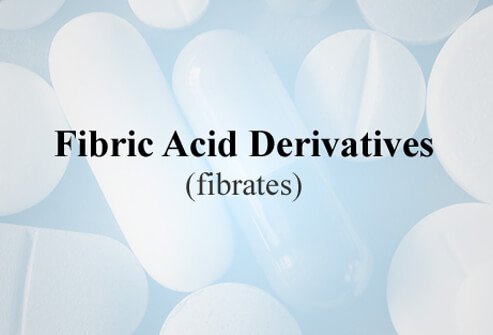
Fibrates aim to lower blood triglyceride levels by 35 to 50 percent and raise HDL ("good") cholesterol levels by 5 to 20 percent. Fibrates work by reducing the amount of triglycerides produced by the liver, and increasing the rate at which the triglycerides are removed from the bloodstream.
While they can increase HDL cholesterol, fibrates do not work to lower LDL ("bad") cholesterol and are often combined with statins to accomplish this. Fibrates are also prescribed to help prevent heart attacks in at-risk patients with high blood triglycerides and low HDL cholesterol.
fenofibrate (Tricor)
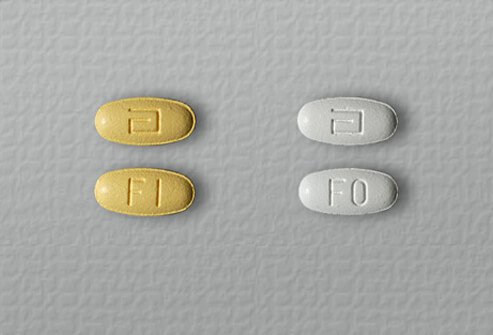
Drug Class: Fibrates
Prescription: Yes
Generic: Yes
Preparations: Tablets of 54 and 145 mg.
Prescribed for: Fenofibrate (Tricor) is used along with a non-drug program (including diet changes) to treat elevated cholesterol and triglyceride levels.
Side effects: Common side effects of fenofibrate (Tricor) include stomach pain or upset, back pain, constipation, headache, dizziness, trouble sleeping, or runny or stuffy nose. Muscle damage may occur, and muscle pain, tenderness, weakness and fever should be reported promptly to your physician. Decreased sexual drive, yellowing of the eyes or skin (jaundice), and stomach pain may occur and also should be reported.
gemfibrozil (Lopid)

Drug Class: Fibrates
Prescription: Yes
Generic: Yes
Preparations: Tablet of 600 mg.
Prescribed for: Gemfibrozil (Lopid) is used for persons with either low HDL cholesterol and/or high triglyceride concentrations to reduce the risk of heart attacks. It also is used in persons with very high triglyceride levels that are at risk for pancreatitis (inflammation of the pancreas).
Side effects: Side effects of gemfibrozil (Lopid) include upset stomach, stomach/abdominal pain, diarrhea, tiredness, nausea, vomiting, headache, dizziness, drowsiness, joint pain, loss of interest in sex, impotence, difficulty having an orgasm, numbness or tingly feeling, unusual taste, cold symptoms (stuffy nose, sneezing, sore throat), depression, blurred vision. Less common side effects are muscle aches, pains, weakness, or tenderness.
What are bile acid sequestrants?

The liver produces bile acids (a main component of your digestive enzymes secreted by the liver) using cholesterol. Bile acid sequestrants bind bile acids in the intestine causing bile acids to be excreted in the stool. This causes the liver to use more of the blood cholesterol to make more bile acids, and in turn, lower blood cholesterol levels.
Bile acid sequestrants used alone, mildly lower LDL cholesterol. They are commonly used in combination with other classes of cholesterol drugs to more effectively lower LDL cholesterol levels.
colesevelam (Welchol)

Drug Class: Bile acid sequestrants
Prescription: Yes
Generic: No
Preparations: Tablet of 625 mg, or oral suspension 3.75 gram packet and 1.875 gram packet
Prescribed for: Colesevelam (Welchol) is used to treat high blood cholesterol levels, especially high levels of LDL cholesterol. It does not lower cholesterol as much as the statin class of drugs, but when used in combination with a statin, it lowers cholesterol levels further than the statin alone.
Colesevelam (Welchol) also is used in combination with other drugs for treating type 2 diabetes such as metformin (Glucophage), sulfonylureas, or insulin to further lower blood sugar levels.
Side effects: Colesevelam (Welchol) usually is well-tolerated. Patients may experience constipation, upset stomach, indigestion, nausea, vomiting, gas, headache, stomach pain, diarrhea, feeling weak or tired, muscle pain, runny nose, sore throat, or flu symptoms.
colestipol (Colestid)

Drug Class: Bile acid sequestrants
Prescription: Yes
Generic: Yes
Preparations: Tablet of 1 gm. Granules in 5gm packets or bulk.
Prescribed for: Colestipol (Colestid) is used for the treatment of high cholesterol in conjunction with dietary control; for the treatment of diarrhea due to increased intestinal bile acids after some types of surgery; for the treatment of itching associated with partial obstruction to the flow of bile due to liver disease.
Side effects: Side effects of colestipol (Colestid) include constipation, stomach upset, heartburn, indigestion, belching, gas, diarrhea, nausea, loss of appetite, aggravated hemorrhoids or rectal irritation, change of taste, headache, or itching. If patients experience unusual bruising or bleeding, severe stomachaches, or vomiting they should notify their physicians.
cholestyramine (Questran)

Drug Class: Bile acid sequestrants
Prescription: Yes
Generic: Yes
Preparations: Powder
Prescribed for: Cholestyramine is used for reducing cholesterol levels in the blood, to relieve the itching of liver and biliary disease, and to treat overdoses of digoxin or thyroid hormone.
Side effects: The most common side effects are constipation, stomach/abdominal pain, bloating, nausea, vomiting, diarrhea, weight loss, loss of appetite, excessive gas (flatulence), hiccups, a sour taste in your mouth, skin rash or itching, irritation of your tongue, itching or irritation around your rectal area, muscle or joint pain, dizziness, spinning sensation, or ringing in your ears. Long-term use of cholestyramine may cause a deficiency of vitamins A, D, E, and K.
What is nicotinic acid (vitamin B3 or niacin)?
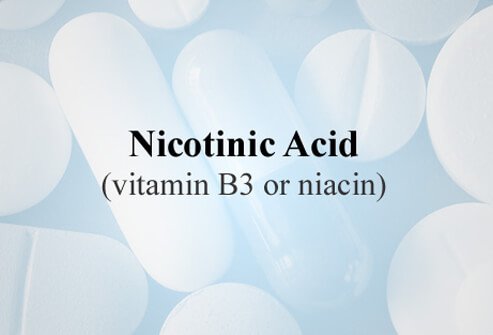
Nicotinic acid (vitamin B3 or niacin) is a B vitamin. Niacin is a common vitamin component of most balanced diets. However, the dose of niacin used to treat cholesterol is much higher than the average dietary intake. Nicotinic acid (niacin) is available in immediate release and sustained release preparations. Some nicotinic acid preparations are available over-the-counter but are not federally regulated.
Nicotinic acid is used to increase HDL ("good") cholesterol (sometimes by as much as 30%). It is only mildly effective at lowering LDL ("bad") cholesterol and triglyceride levels.
niacin, nicotinic acid, vitamin B3
(Niacor, Niaspan, Slo-Niacin)
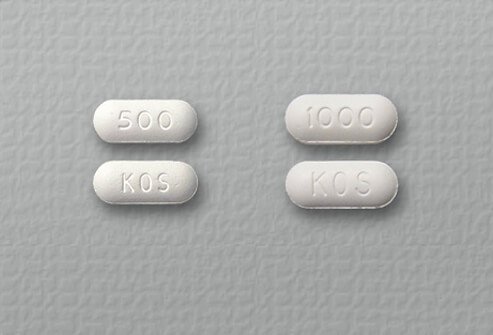
Drug class: Nicotinic acid
Prescription: Yes and over-the-counter (OTC)
Generic: Yes
Preparations: Tablets of 50, 100, 250, 500 and 750 mg. Capsules of 125, 250, 400, 500, 750 and 1000 mg.
Prescribed for: Nicotinic acid (vitamin B3 or niacin) is used for treating niacin deficiency and elevated blood cholesterol and/or triglyceride levels and for increasing HDL cholesterol.
Side effects: The most common side effects of nicotinic acid (vitamin B3 or niacin) are stomach upset, flushing or redness of skin on the face and neck, headache, itching, dizziness, lightheadedness, diarrhea, and tingling sensations of the extremities. Rare cases of liver failure or muscle injury have occurred from the use of nicotinic acid.
What are cholesterol absorption inhibitors?

Cholesterol absorption inhibitors keep the body from absorbing cholesterol from the foods we eat. This class of drug blocks this absorption in the intestine as our foods are digested. Cholesterol absorption inhibitors are most effective at lowering LDL ("bad") cholesterol, but may also have a small effect on lowering triglycerides and raising HDL ("good") cholesterol levels.
ezetimibe (Zetia)

Drug Class: Cholesterol absorption inhibitors
Prescription: Yes
Generic: No
Preparations: Tablets of 10 mg.
Prescribed for: Ezetimibe (Zetia) lowers blood cholesterol by reducing the absorption of cholesterol from the intestine. Used in combination with statins, it reduces levels of total cholesterol, LDL cholesterol, and triglycerides. It also may raise HDL cholesterol. Combining ezetimibe with a statin is more effective than either drug alone.
Side effects: Ezetimibe (Zetia) usually is well-tolerated. Common side effects include diarrhea, abdominal pain, back pain, stomach or abdominal pain, joint pain, numbness or tingly feeling, tired feeling, headache, dizziness, depression, runny or stuffy nose, cold symptoms, or cough. Hypersensitivity reactions, including angioedema (swelling of the skin and underlying tissues of the head and neck that can be life-threatening) and skin rash occur rarely. Nausea, pancreatitis, muscle damage (myopathy or rhabdomyolysis), and hepatitis have been reported.
Combining drugs to fight high cholesterol.

Because some medications are good at lowering LD ("bad") cholesterol, some are helpful in lowering triglycerides, and others can aid in raising HDL ("good") cholesterol levels, doctors frequently prescribe two medications from two different drug classes to work together. This can more aggressively lower LDL cholesterol and increase HDL cholesterol at the same time, for greater benefit to the patient.
ezetimibe/simvastatin (Vytorin)
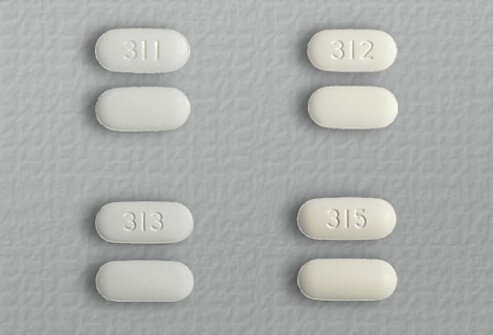
Drug Class: Combination cholesterol absorption inhibitor and statin
Prescription: Yes
Generic: No
Preparations: Tablets of 10/10, 10/20, 10/40, 10/80 mg. (ezetimibe/simvastatin)
Prescribed for: Ezetimibe/simvastatin (Vytorin) is a combination of ezetimibe (Zetia) and simvastatin (Zocor) that is used for treating high levels of cholesterol in the blood. Vytorin reduces total cholesterol and LDL cholesterol while it increases HDL cholesterol.
Side effects: The most common side effects of ezetimibe/simvastatin (Vytorin) are headache, nausea, vomiting, diarrhea, muscle pain, back pain, joint pain, dizziness, depressed mood, memory problems, confusion, numbness or tingly feeling, trouble having an erection, sleep problems (insomnia), cold symptoms (stuffy nose, sneezing, sore throat), and abnormal liver tests. Hypersensitivity reactions have also been reported. The most serious potential side effects are liver damage and muscle inflammation or breakdown.
amlodipine and atorvastatin (Caduet)
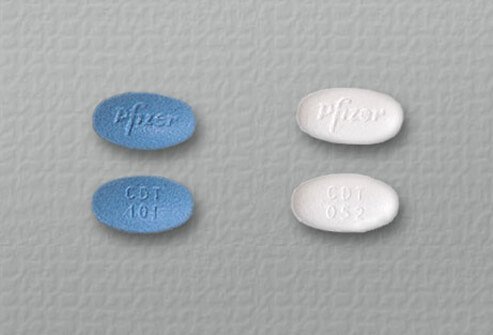
Drug class: Combination calcium channel blocker and statin
Prescription: Yes
Generic: Yes
Preparations: Tablets of 2.5/10, 2.5/20, 2.5/40, 5/10, 5/20, 5/40, 5/80, and 10/10, 10/20, 10/40, and 10/80 mg (amlodipine/atorvastatin)
Prescribed for: Amlodipine and atorvastatin (Caduet) is used to treat high blood pressure (hypertension) or chest pain (angina) that occurs with high cholesterol or triglyceride levels.
Side effects: Common side effects of amlodipine and atorvastatin (Caduet) include dizziness or lightheadedness as your body adjusts to the medication. Swelling hands/ankles/feet, tiredness, or flushing may also occur.
What are omega-3 fatty acids (omega-3 acid ethyl esters)?

Omega-3 fatty acids (omega-3 acid ethyl esters) reduce the production of VLDL particles in the liver, and speed up the removal of triglycerides from the blood. It is unclear how omega-3's work, but they are often recommended for people with high cholesterol.
Omega-3 fatty acids can be found in foods such as fatty fish (salmon, tuna, mackerel), but some people require a prescription dose.
omega-3-acid ethyl esters (Lovaza)
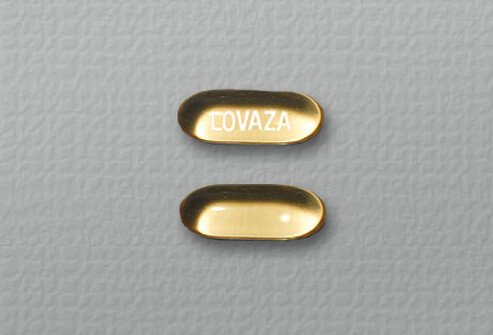
Drug class: Omega-3 acid ethyl esters
Prescription: Yes
Generic: Yes
Preparations: Capsules 1 gram
Prescribed for: Omega-3-acid ethyl esters (Lovaza) is a combination of fatty acids used together with diet and exercise to help lower triglyceride levels in the blood. It is made of omega-3 polyunsaturated fatty acids, which are found in oil from fish, vegetables, and other plant sources.
Side effects: Common side effects of omega-3-acid ethyl esters (Lovaza) include back pain, upset stomach, burping, skin rash, and unusual or unpleasant taste in your mouth.
Cholesterol-altering drugs overview
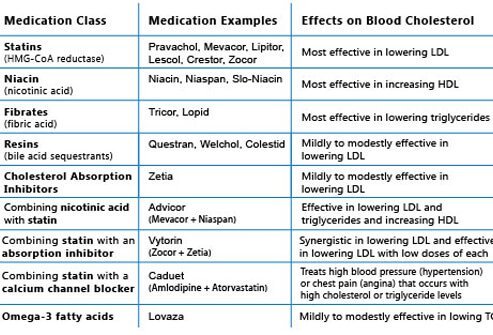
This chart provides an overview of the cholesterol drugs discussed in this slideshow. It lists each of the medication classes, examples within each class, and their areas of effectiveness.
Cholesterol Drugs: What to Expect With Heart Medication
IMAGES PROVIDED BY:
- iStockPhoto / Christie & Cole Studio Inc.
- MedicineNet
- iStockPhoto / Lisa Bodvar
- BigStockPhoto / Tom Oliveira
- Image included with permission and copyrighted by First DataBank, Inc.
- Image included with permission and copyrighted by First DataBank, Inc.
- Image included with permission and copyrighted by First DataBank, Inc.
- Image included with permission and copyrighted by First DataBank, Inc.
- Image included with permission and copyrighted by First DataBank, Inc.
- Image included with permission and copyrighted by First DataBank, Inc.
- Image included with permission and copyrighted by First DataBank, Inc.
- Image included with permission and copyrighted by First DataBank, Inc.
- Image included with permission and copyrighted by First DataBank, Inc.
- Image included with permission and copyrighted by First DataBank, Inc.
- Image included with permission and copyrighted by First DataBank, Inc.
- Image included with permission and copyrighted by First DataBank, Inc.
- Image included with permission and copyrighted by First DataBank, Inc.
- Image included with permission and copyrighted by First DataBank, Inc.
- Image included with permission and copyrighted by First DataBank, Inc.
- Image included with permission and copyrighted by First DataBank, Inc.
- Image included with permission and copyrighted by First DataBank, Inc.
- Image included with permission and copyrighted by First DataBank, Inc.
- Image included with permission and copyrighted by First DataBank, Inc.
- Image included with permission and copyrighted by First DataBank, Inc.
- Image included with permission and copyrighted by First DataBank, Inc.
- MedicineNet
- Image included with permission and copyrighted by First DataBank, Inc.
- MedicineNet
REFERENCES:
- CDC.org: "Cholesterol Facts", "About High Cholesterol", "LDL and HDL: 'Bad' and 'Good' Cholesterol", "Treating High Cholesterol", "Cholesterol What You Can Do"
- Nhlbi.nih.gov: "Who Is at Risk for Atherosclerosis?"
- FDA.gov: "Lipitor", "Crestor", "Zocor", "Pravachol", "Mevacor", "Lescol", "Tricor", "Lopid", "Welchol", "Colestid", "Cholesterol", "Zetia", "Vytorin", "Advicor", "Caduet", "Lovaza"
- UpToDate.com: "Lipid Lowering with Fibric Acid Derivatives"
- Rxlist.com: "Questran"
- Webmd.com "Nicotinic Acid (Niacin) for High Cholesterol"
© 1996-2022 WebMD, LLC. All rights reserved.
Source slideshow on OnHealth


